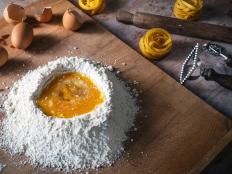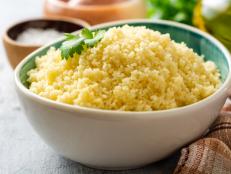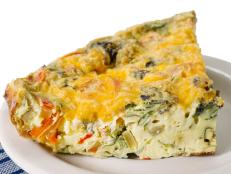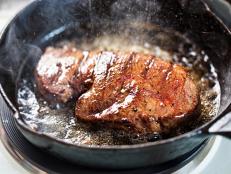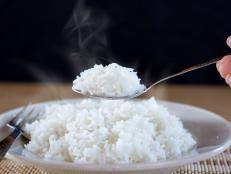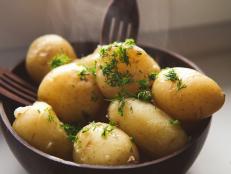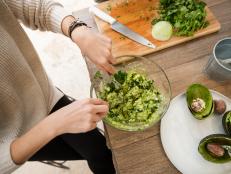How to Make Perfect Spaghetti
Here, how to transform a box of dried spaghetti into a plate of al dente, perfectly sauced pasta. Hone your technique with Food Network Kitchen’s best tips and tricks.
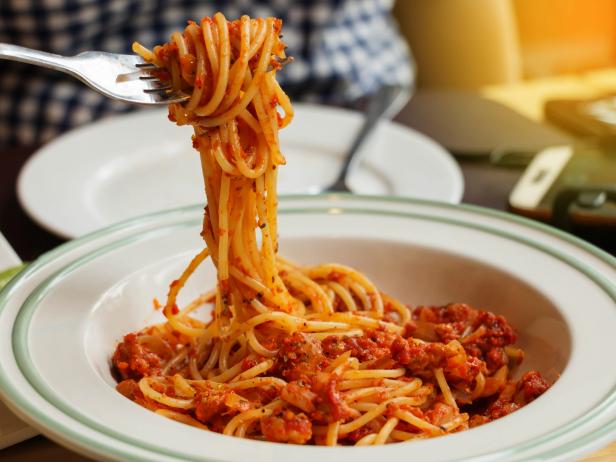
Lamaip/Getty Images
By Layla Khoury-Hanold for Food Network Kitchen
Layla Khoury-Hanold is a contributor at Food Network.
Spaghetti is a classic dry Italian pasta with a long, solid, string-like shape. It forms the basis of many classic pasta dishes such as Spaghetti and Meatballs, spaghetti Bolognese, cacio e pepe and spaghetti aglio e olio. It’s also an excellent, inexpensive pantry staple to have on hand for a back pocket pasta dinner anytime. Its neutral profile lends itself to being tossed together with whatever you have on hand, like jarred sauces, leftover veggies or even just olive oil and a scattering of red pepper flakes. Spaghetti is easy to make, but there are some guidelines to follow to ensure consistently cooked and flavorful strands. Here’s how to make spaghetti and some of our favorite tips and tricks. And if you’re looking to add some meatballs, head over to our story How to Make Perfect Meatballs.
What Do You Need to Make Spaghetti?
To make spaghetti, you’ll need:
Tools:
- Pot: at least 6-quarts or larger, because the strands will expand as they cook.
- Long-handled spoon or tongs: for stirring or retrieving noodles.
- Colander, sieve or skimmer (spider): for draining noodles.
Ingredients:
- 12 ounces dried spaghetti
- 4 quarts water
- 1 tablespoon salt

Cris Cantón/Getty Images
How to Make Spaghetti
Follow the instructions in this foundational Simple Spaghetti with Tomato Sauce recipe for perfect spaghetti every time.
- In a 6-quart pot, bring 4 to 6 quarts water and 1 to 1 1/2 tablespoons salt to a boil.
- Add 12-ounces dry spaghetti to the pot, stir to separate noodles and prevent sticking and bring water back to a boil.
- Cook spaghetti uncovered according to package directions; start checking for doneness 2 minutes before the suggested al dente time.
- Drain spaghetti, reserving up to 1 cup of cooking water to add to sauce.
- Add the cooked spaghetti to the sauce with a splash of the cooking water and stir to coat, thinning it out with more cooking water as necessary.
Simple Spaghetti with Tomato Sauce
This basic pasta dish can be transformed by adding extras like cooked bacon, shrimp or even a few handfuls of baby spinach to the sauce. We like canned San Marzano plum tomatoes because they are slightly sweeter and less acidic than other varieties.
How Much Spaghetti Should I Cook Per Person?
Generally, 2 ounces of dried spaghetti constitutes a serving size for one person. Depending on how substantial the sauce or add-ins are, or whether you’re serving it as a main dish, you might like to consider upping it to 3 to 4 ounces per person.
How Much Salt Should I Add to the Water?
Salting your pasta water is essential to cooking flavorful spaghetti. It should taste salty; a good rule of thumb is 1 tablespoon for every 4 quarts of water. Each pound of pasta should be cooked in approximately 4 to 6 quarts of water, so adjust the salt levels accordingly. And if you don’t feel like measuring? A classic rule of thumb: the water should taste like the sea.
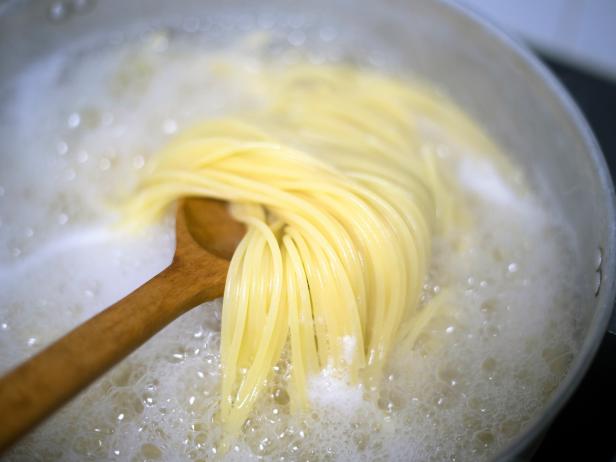
skaman306/Getty Images
How Long to Cook Spaghetti
Cooking times vary, so be sure to check the packaging for suggested cook times. A good rule of thumb is 8 to 12 minutes. You can always fish out a strand and taste it to determine whether it’s done.
Spaghetti Tips and Tricks
- Make your cooking water salty: 1 tablespoon of salt per 4 quarts of water is the ideal ratio. As it cooks, spaghetti absorbs the water and dissolved salt, which helps soften and season the noodles.
- Start checking for doneness early: before you start cooking, check the package directions for suggested cook times. There should be one for al dente, which indicates that the noodle will still have some bite to it once cooked. Start checking your pasta for doneness two minutes before the al dente time to avoid overcooking. And remember, if you’re tossing noodles in a sauce on the stovetop, they’ll continue to cook in the sauce.
- Don’t discard the cooking water: the starchy cooking water is like liquid gold, adding body and gloss to sauces of all kinds. Besides emulsifying sauces, it can also be used to thin sauces, such as pesto or alfredo, to achieve desired consistency.
- Add the noodles to the sauce: instead of ladling sauce on top of the spaghetti, toss strands directly in the sauce. This will ensure that the sauce clings to the noodles and allows the noodles to absorb the sauce, making for a more flavorful forkful.
- Save extra noodles: leftover plain spaghetti can be repurposed with different sauces or add-ins like leftover roasted vegetables, folded with dressing and pantry staples for an Antipasto Pasta Salad, or craft it into a comfort food casserole a la Baked Spaghetti or Skillet Spaghetti Casserole.
- Try a one-pot spaghetti dish: Instead of boiling spaghetti separately, cook it directly in sauce for a flavorful meal with less clean-up. Try this healthy, easy fan-favorite: One Pot Spaghetti with Fresh Tomato Sauce.
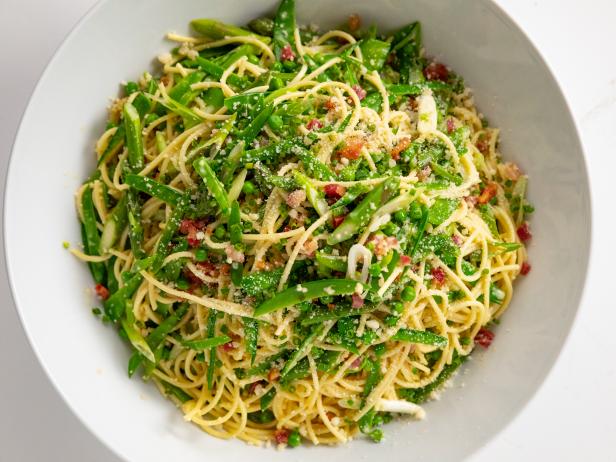
MATT BALL WWW.MATTBALLCAMERA.COM
How Do You Make Basic Spaghetti Better?
Spaghetti is a blank canvas that lends itself to endless riffing with different sauces, proteins, vegetables, and cheeses. Try finishing a simple tomato sauce with extras such as cooked bacon, shrimp or even a few handfuls of baby spinach. Add cream, peas, asparagus and pancetta to make Ina’s Spring Green Spaghetti Carbonara (pictured above). Doctor up a bowl with a jarred marinara or pesto or finish bowls with freshly grated Parmesan, baby burrata or dollops of ricotta. Try adding unexpected textural pops with crunchy components such as toasted pumpkin seeds, roasted walnuts, crushed pistachios or buttery pine nuts.
Pantry staples to keep on hand for a quick-gourmet spaghetti supper include roasted red peppers, sun dried tomatoes packed in oil, artichoke hearts, olives and capers. You can also experiment with different global pantry ingredients, like pulling in chili crisp for spaghetti-fied Dan-Dan Noodles, peanut sauce for a Thai-inspired cold noodle salad, or oyster sauce to make Spicy Tofu and Vegetable Lo Mein.
Other Favorite Spaghetti Recipes

Armando Rafael
This speedy spaghetti supper comes together in 20 minutes and couldn’t be easier. While the noodles cook, canned tomatoes and their juices are transformed into a bright blender sauce and then heated through with oil. The cooked noodles are tossed and coated in the warm sauce and need little more embellishment than salt and pepper and Parmesan.
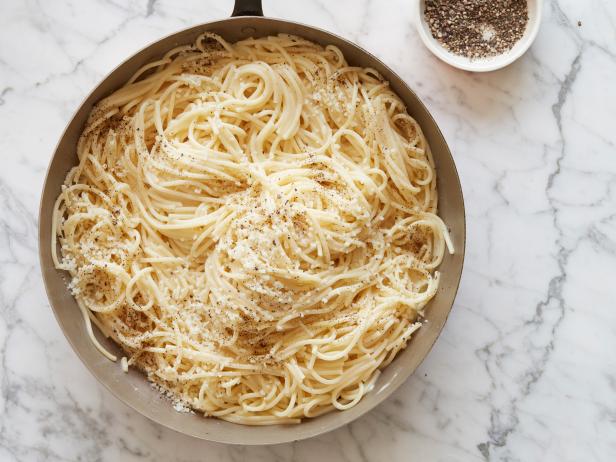
Matt Armendariz, Copyright 2015
All you need to pull this comforting classic together is 30 minutes and a handful of pantry staples, including dry spaghetti, olive oil, butter, black pepper and freshly grated Parmesan. The noodles will finish cooking in the sauce, so be sure to pull them before they reach al dente. And don’t toss that pasta water! The starchy cooking liquid emulsifies the butter, oil and cheese to create a glossy, luxurious sauce to coat every strand.

In this simple spaghetti dinner, al dente noodles finish cooking in a pan of sizzled golden garlic, olive oil and red pepper flakes, all pulled together with a hearty splash of starchy cooking liquid. Parsley and lemon zest add a one-two punch of freshness, while a flurry of freshly grated Parmesan caps off the dish with a savory flourish.

Armando Rafael
You’ll want to make this light, bright spaghetti dish on repeat come summer when zucchini is at its peak, but it’s a great recipe to have in your arsenal year-round. Here, cooked spaghetti mingles with zucchini noodles cooked with lemon zest and red pepper flakes. The sauce comes together by marrying reserved cooking water, a squeeze of lemon juice and a generous cup of grated Parmesan.
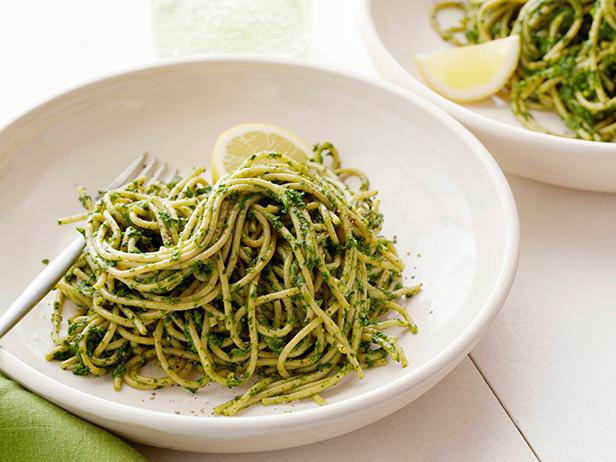
Matt Armendariz, 2013, Television Food Network, G.P. All Rights Reserved.
Kick up your pesto pasta game with this earthy-savory number. While the whole wheat spaghetti cooks, a lean, green, mean kale and pistachio pesto comes together in a flash in the food processor. The starchy cooking water helps to loosen the pesto to create a consistency that makes for an optimal sauce-to-noodle ratio.
Related Links:

























